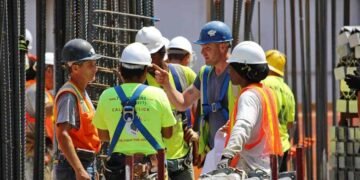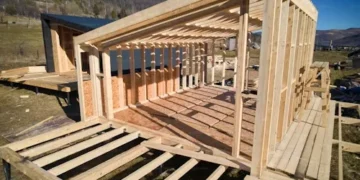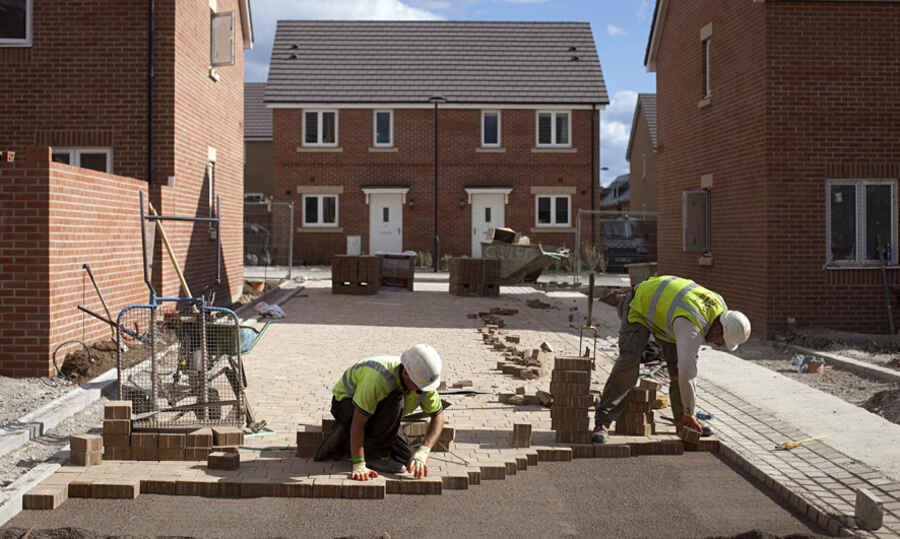When planning for steel-framed residential houses, extensions, or standalone structures like garden offices and sheds, several design considerations come into play. Generally speaking, steel is a much more versatile material compared to wood. But that doesn’t mean you can rush ahead with an off-the-shelf pre-panelised steel frame structure. You need to do your homework!
Here’s a detailed look at these factors:
Things to Consider for Steel Frame Design for House
Structural Integrity
Steel’s strength allows for large spans and open floor plans, providing architects with more freedom in their designs. Without the need for structural walls or columns, steel frames provide opportunities for wide portals, vast open-plan living spaces, and much more creativity with structural elements. It’s essential to work with a structural engineer to ensure the design meets all expected safety standards. Consider the static and live loads the building will experience in its lifetime, and design accordingly.
Thermal Performance
Steel conducts heat more than wood, which can impact the home’s insulation. Incorporating thermal breaks in the design can help improve energy efficiency. Be aware that any increase in width will either increase the footprint, or decrease the interior space available.
Acoustics
Steel can sometimes lead to echoey interiors. Using appropriate insulation and interior finishes can help absorb sound and create a comfortable living environment. Consider using specifically designed components that improve the acoustic efficiency of the construction.
Aesthetics
While steel’s versatility allows for sleek, modern designs with clean lines, some people may find steel framed houses less appealing than traditional wood or brick houses, because of their industrial look or lack of warmth. Therefore, when designing steel framed houses, it is important to consider the aesthetics of the exterior and interior, as well as the integration with the surrounding environment. Some possible design considerations are:
- Choosing the right cladding material and colour to match the style and context of the house. For example, using wood, stone, or stucco to create a contrast or harmony with the steel frame.
- Adding architectural details and features to enhance the visual interest and character of the house. For example, using curved or angled shapes, balconies, porches, or skylights to break the monotony of the rectangular frame.
- Incorporating natural elements and greenery to soften the appearance and improve the comfort of the house. For example, using plants, trees, or vines to cover or decorate the walls, roofs, or windows of the house.
- Using natural light and ventilation to create a bright and airy atmosphere inside the house. For example, using large windows, sliding doors, or open spaces to allow sunlight and fresh air to enter the house.
Cost
Of course, cost is a huge factor in every construction. Though with materials in mind, you must also take into account the longevity of the material, as well as potential maintenance costs in decades to come. Referring back to thermal efficiency, the ongoing costs associated with the construction will be heavily affected by the efficiency of the walls, floors, ceilings and apertures.
Site-Specific Conditions
The design must take into account the specific conditions of the construction site, such as weather, local building codes, and natural features like topography, water and ground cover. Any well-designed residential construction will be designed alongside the natural environment it resides in, rather than in competition with it.
Sustainability
The design should consider the environmental impact of the construction process and the building’s operation. This can include factors like material sourcing, energy efficiency, and waste management. Is the steel frame manufactured from recycled or recyclable materials?
Future Requirements
Since buildings have a long service life, the design should anticipate future needs and changes. Consider the basics, such as communication and power cables, but also any future construction plans you may have. You may want to extend your extension even further in the next few years, or allow the possibility for expansion if your family or needs grow.
Conclusion
To summarise these main points, the design considerations for steel-framed residential houses, extensions, and standalone structures are clearly multifaceted and require careful planning. Steel, with its versatility and strength, offers a robust solution for various construction needs. However, it’s crucial to remember that each project is unique and requires a tailored approach. Aside from personal preferences, factors such as structural integrity, thermal performance, acoustics, aesthetics, cost, site-specific conditions, sustainability, and future requirements all play a vital role in the design process.
By taking these considerations into account and working with experienced professionals, you can ensure that your steel-framed structure is not only structurally sound and aesthetically pleasing but also environmentally friendly and future-proof. Whether you’re planning a new build, an extension, or a standalone garden office or shed, steel framing offers a versatile, durable and sustainable solution that can be customised to meet your specific needs and preferences with just some careful planning.
Recommended Posts:















